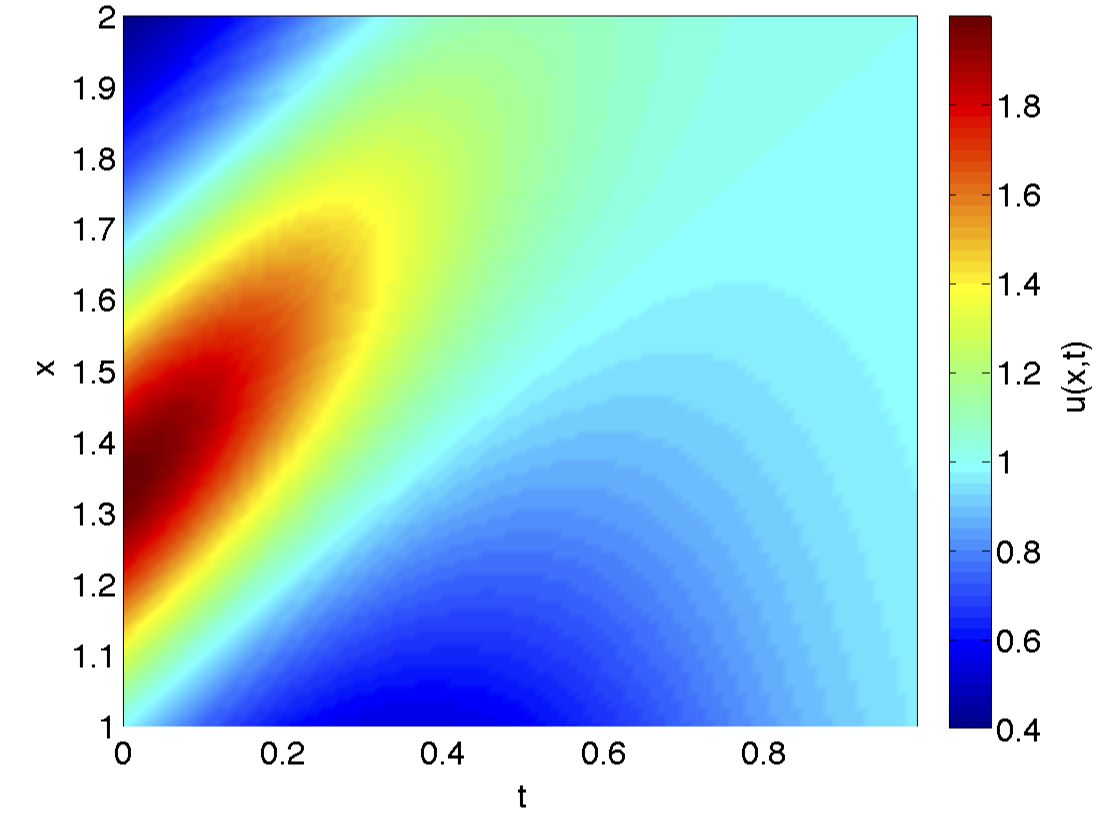
|
Engineering Calculus 1310 |

|
The calculus is a set of tools to analyze the relationships and functions essential for modeling physical processes important in science and engineering applications.
1310 Entrance requirements and prerequisites
- "C" or better in College Algebra and Trigonometry (MATH 1050 AND MATH 1060)
- "C" or better in Precalculus (MATH 1080)
- AP Calc or AB score of 3 or better
- Accuplacer CLM score of 95 or better
- ACT Math score of 28 or better
- SAT Math score of 630 or better
- Departmental consent
Learning Objectives of 1310
The goal of Math 1310 is to master the basic tools for the study of functions f(x)=y, termed the calculus, and become skilled in its use for solving problems in science and engineering. These basic tools and problem solving skills are described below.
The tools and skills
- Students will understand how to transform functions into other functions through x- and y- translations and rescaling, re-parameterizations, and function composition. Students will also know the properties of special classes of functions including logarithms, exponential functions, polynomials, and rational functions; and know how to obtain function inverses f^{-1}(y)=x when they exist.
- Students will master the concept of a limiting value of a function f(x)=y when x approaches a value c, know when limits exists, utilize limit laws, how the property of continuity of a function at c relates to its limiting value, how asymptotic behavior can be described by limits, and how limiting values can be specified even when the f(c) is not defined.
- Students will understand how to use limits to compute the derivative of a function f' that describe or rate of change of a function f. Students will be able to utilize derivatives to model how two related quantities change with respect to each other, including motion of objects by in terms of velocity and acceleration. Students will also learn the methods of differentiation for different classes of functions including exponential and logarithmic functions, trigonometric and inverse trigonometric functions, power functions, and compositions, sums, products, and quotients of functions, as well as differentiating functions that are only implicitly defined by an equation. Students will also be able to utilize the derivative in applied contexts, including function approximation, and how the average slope of a function relates to the derivative through the mean value theorem. If two quantities are related by an equation, students will be able to obtain the derivative of one quantity by knowing the derivative of the other. Students will know how to utilize linear approximations to perform numerical/algorithmic equation solving via Newton's method. Also, students will be able to utilize the derivative to find maximum, minimum, or otherwise "optimal" input values for equations important in science, business, and engineering.
- Students will understand the definition of the integral of a function as the limiting value of an increasingly large average of function values. They will be able to relate the integral to anti-differentiation, when appropriate, through the fundamental theorem of calculus. Students will also be able to relate the integral to the area under the function's curve, know how to approximate the integral by a finite sum, and how to integrate over infinite-length domains. Specific integration techniques will also be mastered, including substitution, integration-by-parts, and partial fractions. Finally, students will understand the key concept underlying integration, that it computes the net accumulation of a quantity through summation of the change in the quantity amount per unit of time or space, over an specified interval of time or space.
Problem solving fluency
- Students will be able to read and understand problem descriptions, then be able to formulate equations modeling the problem usually by applying geometric or physical principles. Solving a problem often requires a series of transformations that include utilizing the methods of calculus. Students will be able to select the appropriate calculus operations to apply to a given problem, execute them accurately, and interpret the results using numerical and graphical computational aids.
- Students will gain experience with problem solving in groups. Students should be able to effectively transform problem objectives into appropriate problem solving methods through collaborative discussion. Students will also learn how to articulate questions effectively with both the instructor and TA, and be able to effectively articulate how problem solutions meet the problem objectives.
Week-by-week guide of topics and textbook sections
- Week 1: 1.3,1.5, 1.6---Functions, Compositions, Exponential Function, Logarithms, Inverse Functions
- Week 2: 1.7-2.1, 2.2---Parametric Curves, Velocity, Limits, Limit Laws
- Week 3: 2.3-2.5--- Continuity, Derivatives, Rate of Change.
- Week 4: 2.5-2.7---Relationship between a Function and its Derivative. Super quiz.
- Week 5: 2.8-3.2 Derivatives of Polynomials, Exponentials, Products and Quotient of functions rules.
- Week 6: 3.3-3.5 Derivatives of Trig Functions, Chain Rule, Implicit Differentiation; Midterm exam 1 covering material from weeks 1-5.
- Week 7: 3.6-3.8 Inverse Trig Functions, Log Functions, and their Derivatives,
Applications.
- Week 8: 3.9-4.2 Linear Approximation, Differentials, Related Rates, Max and Min Values.
- Week 9: 4.3-4.5 Derivatives and Shapes of Curves, Graphing, l'Hopital's Rule; Super Quiz.
- Week 10: 4.6-4.8 Optimization, Newton's Method, Antiderivatives.
- Week 11: 5.1-5.3 Areas, Distances, The Definite Integral, Evaluating Definite Integrals; Midterm exam 2 covering week 6-10 material.
- Week 12: 5.4-5.6 Fundamental Theorem of Calculus, Substitution Rule, Integration by
Parts.
- Week 13: 5.7-5.9 Integration Techniques, Approximate Integration.
- Week 14: 5.10, 6.1-6.2 Improper Integrals, Areas Between Curves, Volumes. Super Quiz.
- Week 15: Slack time and Review.
- Week 16: Finals week: comprehensive final exam.